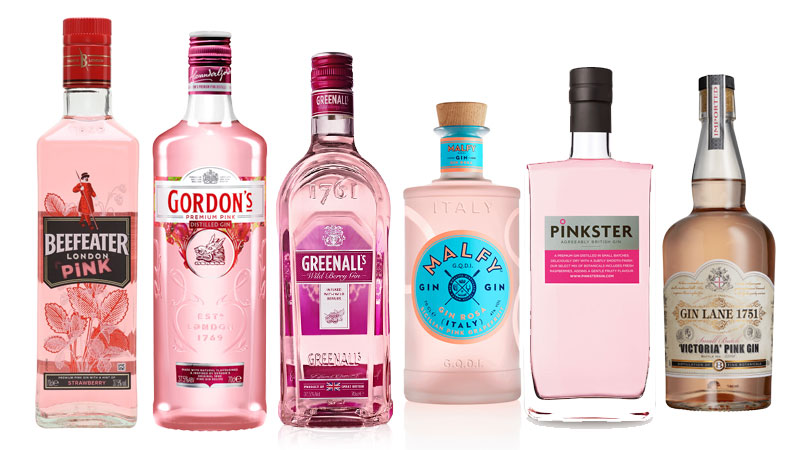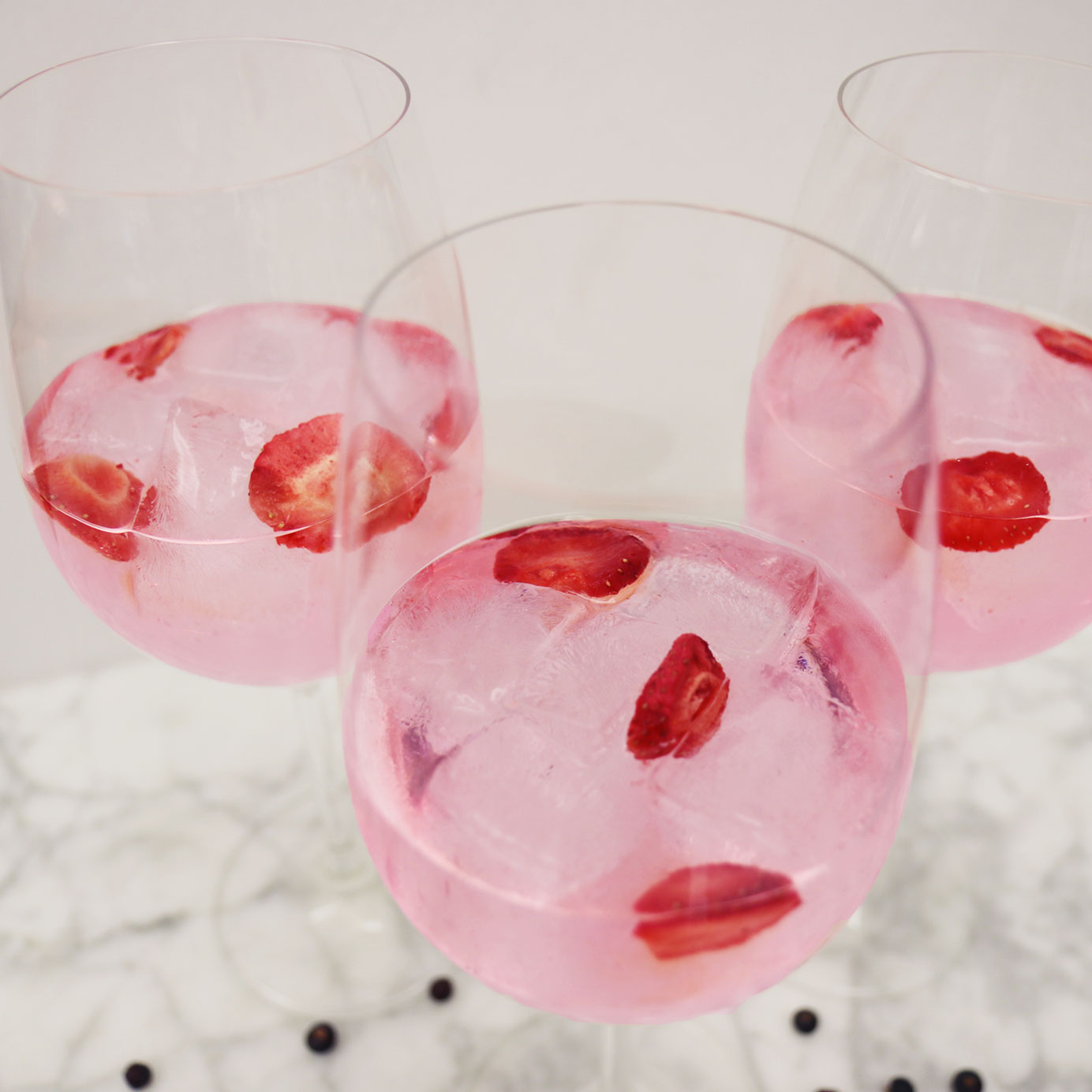There was a time, not too long ago, when gin was clear, unaged, and tasted mostly like juniper. Stroll into your local liquor store today, however, and you’re likely to find an assortment of aged gins, those swapping juniper for softer flavors, and, suddenly, pink gins.
Yes, pink. These carefully crafted spirits have colors ranging from ballet slipper to flamingo to ripe summer watermelon.
Their rosy hues come from fruits, herbs, spices, or bitters, making pink gin a real, respectable spirit — not a low-proof facsimile with artificial coloring. And now, after more than a dozen such launches in the U.K., plus a handful of others in countries like Spain and Italy, the category has begun to appear stateside, with bottles available from Beefeater, Gordon’s, Gin Lane 1751, and others.
As with so many trends, we have millennials to thank (or blame) for the rise of pink gin.
“We have seen that millennials have interest in cocktails with increasingly diverse flavors,” Shefali Murdia, Beefeater brand director, says. The brand recently launched Beefeater Pink, which starts with Beefeater’s traditional dry gin base and fuses it with natural strawberry alongside traditional botanicals like juniper and citrus. The berry flavor is subtle, not cloying. Master distiller Desmond Payne was inspired by the legacy of Beefeater’s founder, James Burrough, who had tinkered with spirits like raspberry gin and cherry brandy.
“It’s best served in a goblet with tonic water, lemonade, or on the rocks with chopped fresh strawberries,” Murdia says.
Gin Lane 1751 drew upon British maritime history in creating its Victoria Pink Gin. The spirit is both different from and a descendant of the Pink Gin cocktail, a two-part combination of gin and Angostura bitters that dates back to the mid-1800s and was a favorite among the British Royal Navy. The bitters calmed sea sickness and other maladies, while the gin made it more palatable — and was part of every sailor’s daily ration.
Victoria Pink Gin gets its color from spiced bitters. It’s in the London Dry style, with juniper at the forefront, followed by an intriguing dose of bitters, and botanicals like Seville orange, cassia bark, and star anise. For all its eye-catching pinkness and subtle spiced flavor, though, it still plays like a traditional gin.
“Pink gin can be consumed the same way London Dry is consumed,” Gin Lane 1751 founder, Geoff Curley, says. He recommends it with tonic, in a Martini, or in other classic gin cocktails like the Fitzgerald, Casino, and Negroni. “It’s a perfect companion for changing up a cocktail recipe calling for London Dry.”

The cynics among us could place pink gins squarely within the rosé-ification of the drinks industry, where photogeneity trumps quality and we’re all only as relevant as some influencer’s next Instagram. After all, it’s absolutely true that pink gins are courting millennials. But that’s only half the story.
“Gin consumption is on the rise,” says Murdia. “The category is attracting a variety of different consumers.” Gin is an especially strong player globally, with Spanish drinkers consuming 1.07 liters of gin per person annually. According to a recent IWSR report, pink gin accounted for 40 percent of Spanish category growth in 2017.
America spends the most on gin, generating some $1.745 billion sales in 2018. While our consumption by volume is expected to decrease in the coming years, industry analysts predict that will primarily affect budget gin.
Additionally, as the American cocktail revolution continues to evolve, drinkers are thirsty for what’s new and next, be it a fresh spin on a classic cocktail like the Daiquiri, ancient spirit category like amaro, or reinterpretation of a familiar face. Flavored vodkas, once associated with food coloring and early-aughts artifice, are getting a farm-to-glass makeover at tiny distilleries and international power players like Ketel One. In this climate, it’s hard to fault gin distillers for aiming to expand their audience and ditch a possibly stodgy reputation.
Dozens of pink gins are now on the market, from craft upstarts to British gin-making OGs like Beefeater. Change is inevitable, but so is progress.
Six Pink Gins to Try
Beefeater Pink
This easy-drinking update offers a hint of strawberry sweetness alongside those classic juniper notes. $20
Gin Lane 1751 Victoria Pink Gin
It’s floral and citrus-y with a healthy kick of spice. $25
Malfy Gin Rosa
Pink grapefruit and rhubarb account for this Italian gin’s color and fresh, juicy flavor. $30
Greenall’s Wild Berry Gin
Blackberries and raspberries provide lots of juicy berry flavors, which play nicely with juniper and warming spice. $18
Pinkster
British raspberries add some fruit-forward sweetness to the dry pepper and juniper notes. $38
Gordon’s Pink Gin
The tried-and-true London Dry gets a dose of red berries and a touch of sweetness. $20
